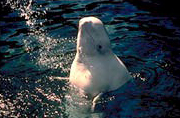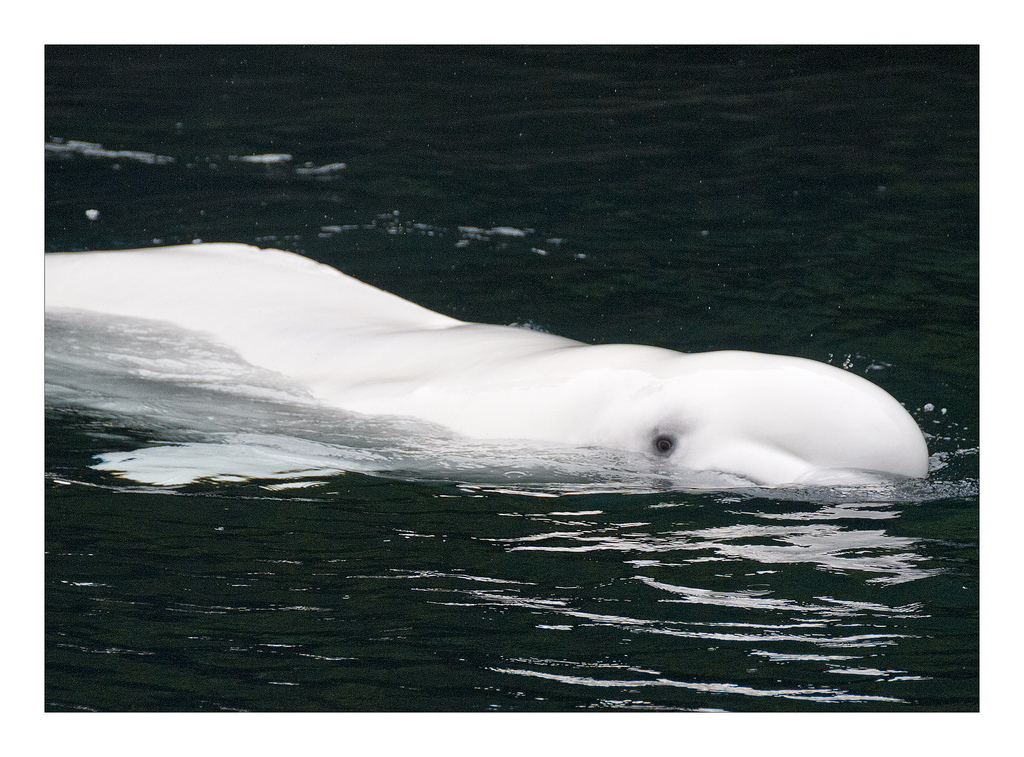
Scientists studying Cook Inlet belugas have watched the dramatic decline of their numbers from 1,300 in the 1970s to only 300 now.
Biologists, state and federal officials, commercial fishermen and oil and gas developers all speculate about why the belugas haven’t rebounded after they were put on the endangered species list in 2008. But there are no concrete answers.
David Martin is the President of the Cook Inlet Drift Association or UCDA. Martin has been fishing in Cook Inlet for more than 40 years. He thinks food availability for the whales isn’t the issue, saying there is plenty of salmon and eulachon for them to eat. He thinks the decline started with over harvest by subsistence hunters in the 1990s that took the animals too far down.
“And in that same time frame the orca whales, which feed on belugas were increasing in numbers, and the combination of the two, I think have kept the beluga numbers at a low level,” Martin said.
But National Marine Fisheries Service biologist Barbara Mahoney says while there are records of some predation by orcas on beluga whales, there’s nothing that indicates it happens frequently. Instead, NMFS is looking into a wide range of other possible causes of the Beluga’s decline, including industrial development in the inlet that causes noise and possible habitat impacts during calving time. She says they have studied pollutants in the whales bodies but the tests don’t point to a smoking gun.
“For most of the contaminant load study, they are lower than the healthy population in the Chukchi Sea belugas,” Mahoney said.
Bob Shavelson is the advocacy director for Cook Inletkeeper. He says contaminant tests need to search for drugs being flushed down toilets and making their way into the bay.
“One of the concerns is what are called emerging pollutants and these are things like pharmaceuticals and birth control pills and Viagra and even in very, very low amounts these pollutants can have adverse effects on marine life,” Shavelson said.
Shavelson says the EPA’s secondary treatment exemption for the Anchorage Sewage system that allows the city to essentially screen out the solids and add chlorine to the effluent before discharging into the Inlet is a problem. He says the EPA should not treat Cook Inlet like an ocean.
“EPA has failed to characterize Cook Inlet as an estuary. An estuary is a place where fresh water and salt water meet, I mean clearly it meets a definition of an estuary, which brings about an entirely different set of rules, instead EPA says ‘oh no, it’s an ocean and as an ocean it can assimilate a lot more pollution.’ It all comes down to legal definitions and basically a predetermined outcome,” Shavelson said.

Shavelson also has concerns about toxins being dumped into the inlet from the oil and gas development industry. But Barbara Mahoney says all of the studies that have been conducted on Cook Inlet belugas and their environment are not conclusive and the reasons behind the lack of a rebound are just not clear.
“You know it’s a great mystery and I think everyone would like to have one point and say this is it and if we fix this we would have the animals recovered, recovering but it could be just a blend of possibilities of why. Everything adds a little more weight to why they can’t recover right now or maybe it’s just taking longer or there might be something that we don’t know at this time and we’re hoping to find out,” Mahoney said.
Funding is a problem and NFMS is working to get more money to investigate the belugas in greater detail. The annual survey results on the estimated numbers of the whales will be out in November. A new report looking at contaminant loads is also due later this year.
